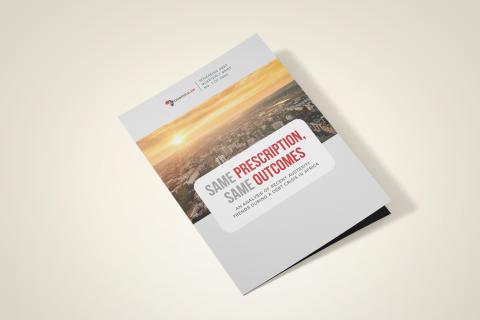
July 24, 2025
This study analyzes trends in public debt and austerity in Africa, focusing on the period immediately preceding the COVID-19 pandemic (2018–19) to date (2023/2024). More specifically, it centers on countries at high risk of defaulting on their debt, those that have defaulted on their debt repayments during the pandemic and post-pandemic period, and those currently undertaking debt restructuring. The study further analyzes fiscal policy measures adopted by indebted countries, focusing on their impact on social spending and the well-being of populations in Africa. The selected countries for this study are Zambia, Ghana, Malawi, and Kenya.
Key findings
For all the studied countries, their debt stock has been steadily rising since thepre-pandemic period. Due to the high cost of non-concessional external borrowingfrom emerging lenders during the late 2000s and 2010s, external debt servicing(both principal and interest payments) increased significantly over the last decade, peaking between 2018 and 2022.
Countries with access to international financial markets have drastically increasedtheir non-concessional borrowing as Zambia and Ghana have demonstrated; bothowe private creditors a significant amount of their overall external debt stock.Ghana’s debt repayments owed to private creditors in 2022 surpassed those owedto other creditors (69% of external debt service).
A comparable trend is observed even with countries that primarily borrow fromofficial lenders, such as Malawi and Kenya. Malawi’s commercial creditors hold alower proportion of the country’s external debt (26%) than official multilaterallenders (64%). However, the country’s debt repayments to commercial creditorshave surpassed those made to other lenders in recent years. Kenya’s 2024 debtrepayments to commercial lenders account for 60% of its external debt service.
This high debt-servicing burden is directly linked to the high cost of borrowing. African countries pay much higher interest rates for debt from private lenders, farexceeding the rates that countries in other regions pay.
With the significant shift in debt composition in countries like Zambia and Ghana,where commercial creditors hold a substantial amount of debt, restructuring theirdebt under the Common Framework has been a lengthy and complex process.
The impact of excluding multilateral lenders from debt restructuring processes isfelt more in debt restructurings for countries like Malawi where multilateralcreditors hold the largest share of external debt. Between 2023 and 2029, 67% ofMalawi’s debt service will go to multilateral lenders.
In countries undertaking debt restructuring, there has been an increase in social spending since the pandemic, most notably in Zambia. However, for some countries like Malawi and Ghana, there was minimal or hardly any increase in real terms.
The cost of delayed debt restructuring for indebted countries is more aggressive austerity. Kenya recorded more significant social spending cuts in recent years than the other studied countries.
Despite the increased funding allocated to social protection programs for some countries, the resounding message is that these programs should be highly targeted. There is evidence of rising poverty levels amidst multiple shocks, including inflation. As a result, the increasing number of new poor people in these countries face the risk of being excluded from receiving adequate social protection amidst the ongoing economic downturn.
The studied countries are primarily adopting reactionary responses to the shocks rather than working towards achieving universal access to social services and social protection to ensure their citizens are protected from economic and social hardships. These responses are likely to further exacerbate the inequality between African countries and more advanced economies, with the former continually falling behind.
It is noteworthy that these countries are implementing some progressive measures aimed at taxing the wealthy, including corporate tax reforms. However, the studied countries are also adopting vast revenue reforms with adverse impacts on their citizens’ welfare, such as indirect taxes like the value-added tax (VAT) and taxes affecting livelihoods and small businesses. However, the impact of indirect taxes on inequality, largely felt by low- income earners and households, cannot be downplayed, especially amidst an economic downturn and low levels of government support through social safety nets.
Interestingly, a number of the studied countries are adopting environmental taxes as a fiscal tool to increase revenue. While the rationale behind these taxes could be to raise funds for climate action, it is highly probable that these funds are leaking out as debt repayments.
The ongoing trends of debt and austerity pose a significant risk to the futures of children and youth in Africa. Africa’s children and youth, who are barely covered under social protection programs, are exposed to risks and vulnerabilities during debt crises. The narrow focus on protection of the ‘most vulnerable’ has excluded the working-class population, including youth, from buffers to shield them from poverty and vulnerability.
Download the full report here: Same Prescriptions, Same Outcomes - An Analysis of Recent Austerity Trends During a Debt Crisis in Africa
Cited as: African Sovereign Debt Justice Network, "Same Prescriptions, Same Outcomes - An Analysis of Recent Austerity Trends During a Debt Crisis in Africa", Afronomicslaw Sovereign Debt Quarterly Brief No. 7., 2025.